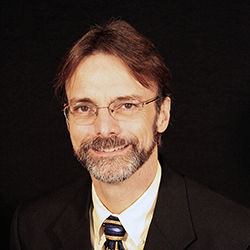APS Calls for Pain Management Funding
Real World Health Care concludes its series on pain management with an interview with David Williams, PhD, president of the American Pain Society (APS). Dr. Williams is Professor of Anesthesiology, Medicine (Rheumatology), Psychiatry and Psychology at the University of Michigan, where he also serves as the Associate Director of the Chronic Pain and Fatigue Research Center, co-director of Research Development within the Michigan Institute for Clinical and Health Research (MICHR), and is on the senior faculty of the Neurosciences Program.
The APS is a multidisciplinary community that brings together a diverse group of scientists, clinicians and other professionals to increase the knowledge of pain and transform public policy and clinical practice to reduce pain-related suffering. APS was the first multidisciplinary professional society dedicated to pain science and the practice of evidenced-based pain care.
Research Priorities
Real World Health Care: What are the APS’s priorities in terms of pain management research?

David Williams, PhD, American Pain Society
David Williams: Pain is complex. No one view point is likely to capture such complexity. The APS values interdisciplinary collaboration demonstrated by respect for the value of diverse views and perspectives among professionals. Our society is composed of professionals from the basic sciences who examine pain mechanisms at the level of neurons and neurotransmitters. We’re also pharmacologists exploring and developing new drugs for pain. We’re psychologists, occupational therapists, nurses, and physical therapists working to refine behavioral, psychosocial, patient-centric, and self-management approaches to pain. We are clinical and translational researchers developing and implementing multi-modal forms of treatment into real-world settings. And we’re public policy experts working to improve options for pain care at systemic levels. As a society we try to facilitate the broad-based work of our members while encouraging collaboration across disciplines.
RWHC: Can you provide an example or two of recent or current pain management research programs you are supporting or have supported? Why are those research programs so impactful?
DW: The Annual Scientific Meeting and the Society’s Journal of Pain are the two best sources to witness APS’s commitment to the dissemination of evidence supporting multidisciplinary pain care. APS also financially supports the research of many of its early career professionals in the form of the Rita Allen Foundation Award for Pain (basic science), the Future Leaders in Pain award (in part supported by the MayDay Foundation), and through contributions to the APS Pain Research Fund. This past year, the APS also partnered with Pfizer to offer a grant program focused on learning and change that will help support the implementation of aspects of the National Pain Strategy.
Research and Clinical Challenges
RWHC: What are some of the biggest challenges facing pain management researchers and how are those challenges being addressed?
DW: Funding is always a big challenge for a society focused on research. Annually, the APS meets with leadership at the National Institutes of Health (NIH) and with the inter-institute leadership of the NIH Pain Consortium. The needs of societal members are expressed, thematic research discussed, and challenges in grant review presented. There is also a need for pain to be viewed as an important national research priority. Currently many APS members have been invited to participate in the creation of the Federal Pain Research Strategy (FPRS), a document which will serve as a blue print for pain research across Federal agencies.
RWHC: What are some of the biggest pain management challenges facing clinicians, and how are those challenges being addressed?
DW: One big challenge is that as a field, we do not have great treatments for chronic pain. More research is clearly needed. An honest appraisal would suggest that we offer modest benefit for most. Complicating the problem is that relatively more beneficial approaches, such as multi-disciplinary pain care, are difficult to implement both logistically and financially. As such, it is rarely seen in practice. Currently there is research underway to study how best to implement evidence-based approaches in routine care and at a systems level. Such efforts are supported by APS and by the National Pain Strategy.
Approaches to Pain Management
RWHC: How can clinicians integrate pharmaceutical and non-pharmaceutical approaches to pain management in their practice?
DW: Optimal care would suggest integration of both pharmacological and non-pharmacological approaches to pain management. Optimal care would also include a patient-centric approach to care where the patient and provider share decision making about what medications and what non-pharmacological approaches will be utilized. Evidence exists for many medications and many non-pharmacological approaches. Matching the available approaches to the specific needs of an individual patient, however, is the clinical challenge. Informing both the patient and the provider about evidence-based approaches as well as how best to implement those options at the individual level is an area where additional research and training is needed. This important challenge was highlighted by the National Pain Strategy and has been a focus of the APS in its educational agenda.
Opioid Addiction
RWHC: How is the APS working to address the issue of opioid addiction in this country?
DW: The APS is not a practice guild. It is a Society based upon a valuation of science and evidence. As such, we let evidence guide our position rather than politics. For decades, the APS has gone on record as supporting a multi-disciplinary approach to pain management rather than a mono-therapeutic approach (e.g., a solely opioid-based approach). Opioids may or may not have relevance to the care of a given individual and should be viewed in the context of an entire integrated treatment plan designed with input from both the patient and provider. Through the promotion of evidence-based multi-modal care, APS is supporting efforts to find sources of pain relief that go beyond opioids.
Go-To Pain Information Source
RWHC: Is there anything else you would like our readers to know about the work APS is doing?
DW: The APS is the unbiased “go-to” information source regarding pain. We are sought out by governmental representatives, industry, academia, and patient advocacy groups. We support the early careers of young pain scientists and serve as a home for senior scientists, clinicians, and public policy experts interested in changing how chronic pain is managed. Our members have participated in the development of important documents such as the IOM report “Relieving Pain in America,” the “National Pain Strategy”, and the forthcoming “Federal Pain Research Strategy.”
RWHC: How did you get involved in the field of pain management? What continues to inspire you about this field?
DW: Over the years I have studied pain from the perspectives of a basic scientist, a clinical/translational researcher, and currently a clinical trialist. Our understanding of pain continues to evolve and with each finding, new questions arise. It has been both challenging and rewarding to participate in the study of pain. It is also rewarding to see the current field of young scientists taking interest in this topic and taking fresh approaches to problems my generation was not able to solve.

















